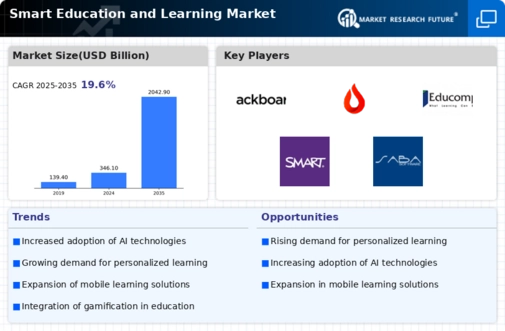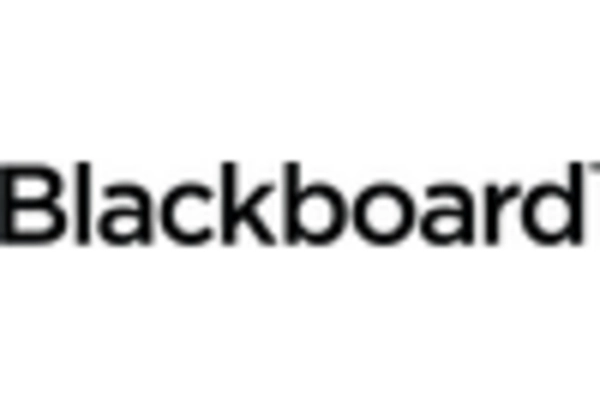-
MARKET INTRODUCTION
-
INTRODUCTION
-
SCOPE OF STUDY
- RESEARCH OBJECTIVE
- ASSUMPTIONS
-
1.2.3
-
LIMITATIONS
-
MARKET STRUCTURE
-
RESEARCH METHODOLOGY
-
2.1
-
RESEARCH TYPE
-
PRIMARY RESEARCH
-
SECONDARY RESEARCH
-
FORECAST
- MARKET DATA COLLECTION, ANALYSIS & FORECAST
- MARKET
-
MODEL
-
SIZE ESTIMATION
-
MARKET DYNAMICS
-
INTRODUCTION
-
MARKET
-
DRIVERS
-
MARKET CHALLENGES
-
MARKET OPPORTUNITIES
-
MARKET
-
RESTRAINTS
-
EXECUTIVE SUMMARY
-
MARKET FACTOR ANALYSIS
-
PORTER’S FIVE FORCES ANALYSIS
-
SUPPLY CHAIN ANALYSIS
-
SMART EDUCATION AND LEARNING MARKET, BY SEGMENTS
-
INTRODUCTION
- BY SOFTWARE
- BY HARDWARE
-
6.2
-
MARKET STATISTICS
-
(LMS)
-
PLATFORM
-
6.2.2.3
-
INTERACTIVE TABLES
-
AND ASSOCIATION
-
6.2.5
-
BY DEPLOYMENT
-
SIZE
-
6.2.7.3
-
ASIA-PACIFIC
-
STUDENT RESPONSE SYSTEMS
-
BY SERVICE
-
MANAGED SERVICES
-
PROFESSIONAL SERVICES
-
BY APPLICATION
-
GOVERNMENT
-
ENTERPRISE/BUSINESS EDUCATION
-
NGOS
-
PROFESSIONAL SERVICES
-
HEALTHCARE
-
CLOUD
-
ON-PREMISE
-
BY ORGANIZATION
-
SMALL AND MEDIUM ORGANIZATION
-
LARGE ORGANIZATION
-
BY GEORGAPHY
-
NORTH AMERICA
-
EUROPE
-
REST OF THE WORLD
-
COMPETITIVE ANALYSIS
-
MARKET SHARE ANALYSIS
-
COMPANY PROFILES
- ADOBE SYSTEMS INC.
- BLACKBOARD (U.S.)
- EDUCOMP (INDIA)
- CISCO
- MCGRAW-HILL EDUCATION (U.S.)
- NIIT LIMITED
- PEARSON PLC. (LONDON, U.K.)
- DESIRE2LEARN (CANADA)
- SUMTOTAL SYSTEM, INC. (U.S.)
- SMART TECHNOLOGIES (CANADA)
- OTHERS
-
(U.S.)
-
SYSTEMS INC. (U.S.)
-
(INDIA)
-
LIST OF TABLES
-
SMART EDUCATION
-
AND LEARNING MARKET, BY SOFTWARE
-
SMART EDUCATION AND LEARNING MARKET,
-
BY HARDWARE
-
SMART EDUCATION AND LEARNING MARKET, BY SERVICE
-
TABLE
-
SMART EDUCATION AND LEARNING MARKET, BY APPLICATION
-
SMART EDUCATION
-
AND LEARNING MARKET, BY DEPLOYMENT
-
SMART EDUCATION AND LEARNING MARKET,
-
BY ORGANIZATION SIZE
-
SMART EDUCATION AND LEARNING MARKET, BY REGION
-
NORTH AMERICA SMART EDUCATION AND LEARNING MARKET, BY SOFTWARE
-
TABLE
-
NORTH AMERICA SMART EDUCATION AND LEARNING MARKET, BY HARDWARE
-
NORTH
-
AMERICA SMART EDUCATION AND LEARNING MARKET, BY SERVICE
-
NORTH AMERICA
-
SMART EDUCATION AND LEARNING MARKET, BY APPLICATION
-
NORTH AMERICA
-
SMART EDUCATION AND LEARNING MARKET, BY DEPLOYMENT
-
NORTH AMERICA SMART
-
EDUCATION AND LEARNING MARKET, BY ORGANIZATION SIZE
-
U.S. SMART EDUCATION
-
AND LEARNING MARKET, BY SOFTWARE
-
U.S. SMART EDUCATION AND LEARNING
-
MARKET, BY HARDWARE
-
U.S. SMART EDUCATION AND LEARNING MARKET, BY SERVICE
-
U.S. SMART EDUCATION AND LEARNING MARKET, BY APPLICATION
-
TABLE 18
-
U.S. SMART EDUCATION AND LEARNING MARKET, BY DEPLOYMENT
-
U.S. SMART
-
EDUCATION AND LEARNING MARKET, BY ORGANIZATION SIZE
-
CANADA SMART EDUCATION
-
AND LEARNING MARKET, BY SOFTWARE
-
CANADA SMART EDUCATION AND LEARNING
-
MARKET, BY HARDWARE
-
CANADA SMART EDUCATION AND LEARNING MARKET, BY
-
SERVICE
-
CANADA SMART EDUCATION AND LEARNING MARKET, BY APPLICATION
-
CANADA SMART EDUCATION AND LEARNING MARKET, BY DEPLOYMENT
-
TABLE
-
CANADA SMART EDUCATION AND LEARNING MARKET, BY ORGANIZATION SIZE
-
TABLE 26
-
EUROPE SMART EDUCATION AND LEARNING MARKET, BY SOFTWARE
-
EUROPE SMART
-
EDUCATION AND LEARNING MARKET, BY HARDWARE
-
EUROPE SMART EDUCATION
-
AND LEARNING MARKET, BY SERVICE
-
EUROPE SMART EDUCATION AND LEARNING
-
MARKET, BY APPLICATION
-
EUROPE SMART EDUCATION AND LEARNING MARKET,
-
BY DEPLOYMENT
-
EUROPE SMART EDUCATION AND LEARNING MARKET, BY ORGANIZATION
-
SIZE
-
GERMANY SMART EDUCATION AND LEARNING MARKET, BY SOFTWARE
-
TABLE
-
GERMANY SMART EDUCATION AND LEARNING MARKET, BY HARDWARE
-
GERMANY
-
SMART EDUCATION AND LEARNING MARKET, BY SERVICE
-
GERMANY SMART EDUCATION
-
AND LEARNING MARKET, BY APPLICATION
-
GERMANY SMART EDUCATION AND LEARNING
-
MARKET, BY DEPLOYMENT
-
GERMANY SMART EDUCATION AND LEARNING MARKET,
-
BY ORGANIZATION SIZE
-
FRANCE SMART EDUCATION AND LEARNING MARKET, BY
-
SOFTWARE
-
FRANCE SMART EDUCATION AND LEARNING MARKET, BY HARDWARE
-
FRANCE SMART EDUCATION AND LEARNING MARKET, BY SERVICE
-
TABLE 39
-
FRANCE SMART EDUCATION AND LEARNING MARKET, BY APPLICATION
-
FRANCE
-
SMART EDUCATION AND LEARNING MARKET, BY DEPLOYMENT
-
FRANCE SMART EDUCATION
-
AND LEARNING MARKET, BY ORGANIZATION SIZE
-
U.K. SMART EDUCATION AND
-
LEARNING MARKET, BY SOFTWARE
-
U.K. SMART EDUCATION AND LEARNING MARKET,
-
BY HARDWARE
-
U.K. SMART EDUCATION AND LEARNING MARKET, BY SERVICE
-
U.K. SMART EDUCATION AND LEARNING MARKET, BY APPLICATION
-
TABLE 46
-
U.K. SMART EDUCATION AND LEARNING MARKET, BY DEPLOYMENT
-
U.K. SMART
-
EDUCATION AND LEARNING MARKET, BY ORGANIZATION SIZE
-
REST OF EUROPE
-
SMART EDUCATION AND LEARNING MARKET, BY SOFTWARE
-
REST OF EUROPE SMART
-
EDUCATION AND LEARNING MARKET, BY HARDWARE
-
REST OF EUROPE SMART EDUCATION
-
AND LEARNING MARKET, BY SERVICE
-
REST OF EUROPE SMART EDUCATION AND
-
LEARNING MARKET, BY APPLICATION
-
REST OF EUROPE SMART EDUCATION AND
-
LEARNING MARKET, BY DEPLOYMENT
-
REST OF EUROPE SMART EDUCATION AND
-
LEARNING MARKET, BY ORGANIZATION SIZE
-
ASIA-PACIFIC SMART EDUCATION
-
AND LEARNING MARKET, BY SOFTWARE
-
ASIA-PACIFIC SMART EDUCATION AND
-
LEARNING MARKET, BY HARDWARE
-
ASIA-PACIFIC SMART EDUCATION AND LEARNING
-
MARKET, BY SERVICE
-
ASIA-PACIFIC SMART EDUCATION AND LEARNING MARKET,
-
BY APPLICATION
-
ASIA-PACIFIC SMART EDUCATION AND LEARNING MARKET, BY
-
DEPLOYMENT
-
ASIA-PACIFIC SMART EDUCATION AND LEARNING MARKET, BY ORGANIZATION
-
SIZE
-
ROW SMART EDUCATION AND LEARNING MARKET, BY SOFTWARE
-
TABLE
-
ROW SMART EDUCATION AND LEARNING MARKET, BY HARDWARE
-
ROW SMART
-
EDUCATION AND LEARNING MARKET, BY SERVICE
-
ROW SMART EDUCATION AND
-
LEARNING MARKET, BY APPLICATION
-
ROW SMART EDUCATION AND LEARNING MARKET,
-
BY DEPLOYMENT
-
ROW SMART EDUCATION AND LEARNING MARKET, BY ORGANIZATION
-
SIZE
-
LIST OF FIGURES
-
RESEARCH TYPE
-
FIGURE 2
-
SMART EDUCATION AND LEARNING MARKET: BY SOFTWARE (%)
-
SMART EDUCATION
-
AND LEARNING MARKET: BY HARDWARE (%)
-
SMART EDUCATION AND LEARNING
-
MARKET: BY SERVICE (%)
-
SMART EDUCATION AND LEARNING MARKET: BY APPLICATION
-
(%)
-
SMART EDUCATION AND LEARNING MARKET: BY DEPLOYMENT (%)
-
FIGURE
-
SMART EDUCATION AND LEARNING MARKET: BY ORGANIZATION SIZE (%)
-
SMART
-
EDUCATION AND LEARNING MARKET: BY REGION (%)
-
NORTH AMERICA SMART EDUCATION
-
AND LEARNING MARKET, BY SOFTWARE (%)
-
NORTH AMERICA SMART EDUCATION
-
AND LEARNING MARKET, BY HARDWARE (%)
-
NORTH AMERICA SMART EDUCATION
-
AND LEARNING MARKET, BY SERVICE (%)
-
NORTH AMERICA SMART EDUCATION
-
AND LEARNING MARKET, BY APPLICATION (%)
-
NORTH AMERICA SMART EDUCATION
-
AND LEARNING MARKET, BY DEPLOYMENT (%)
-
NORTH AMERICA SMART EDUCATION
-
AND LEARNING MARKET, BY ORGANIZATION SIZE (%)
-
EUROPE SMART EDUCATION
-
AND LEARNING MARKET, BY SOFTWARE (%)
-
EUROPE SMART EDUCATION AND LEARNING
-
MARKET, BY HARDWARE (%)
-
EUROPE SMART EDUCATION AND LEARNING MARKET,
-
BY SERVICE (%)
-
EUROPE SMART EDUCATION AND LEARNING MARKET, BY APPLICATION
-
(%)
-
EUROPE SMART EDUCATION AND LEARNING MARKET, BY DEPLOYMENT (%)
-
EUROPE SMART EDUCATION AND LEARNING MARKET, BY ORGANIZATION SIZE (%)
-
ASIA-PACIFIC SMART EDUCATION AND LEARNING MARKET, BY SOFTWARE (%)
-
ASIA-PACIFIC SMART EDUCATION AND LEARNINGMARKET, BY HARDWARE (%)
-
ASIA-PACIFIC SMART EDUCATION AND LEARNINGMARKET, BY SERVICE (%)
-
FIGURE
-
ASIA-PACIFIC SMART EDUCATION AND LEARNINGMARKET, BY APPLICATION (%)
-
FIGURE
-
ASIA-PACIFIC SMART EDUCATION AND LEARNINGMARKET, BY DEPLOYMENT (%)
-
FIGURE
-
ASIA-PACIFIC SMART EDUCATION AND LEARNINGMARKET, BY ORGANIZATION SIZE (%)
-
ROW SMART EDUCATION AND LEARNINGMARKET, BY SOFTWARE (%)
-
FIGURE
-
ROW SMART EDUCATION AND LEARNINGMARKET, BY HARDWARE (%)
-
ROW SMART
-
EDUCATION AND LEARNINGMARKET, BY SERVICE (%)
-
ROW SMART EDUCATION
-
AND LEARNINGMARKET, BY APPLICATION (%)
-
ROW SMART EDUCATION AND LEARNINGMARKET,
-
BY DEPLOYMENT (%)
-
ROW SMART EDUCATION AND LEARNINGMARKET, BY ORGANIZATION
-
SIZE (%)









Leave a Comment